Stettbacherrain Housing, Zurich
invited competition, 2021 | 1st prize - ongoing
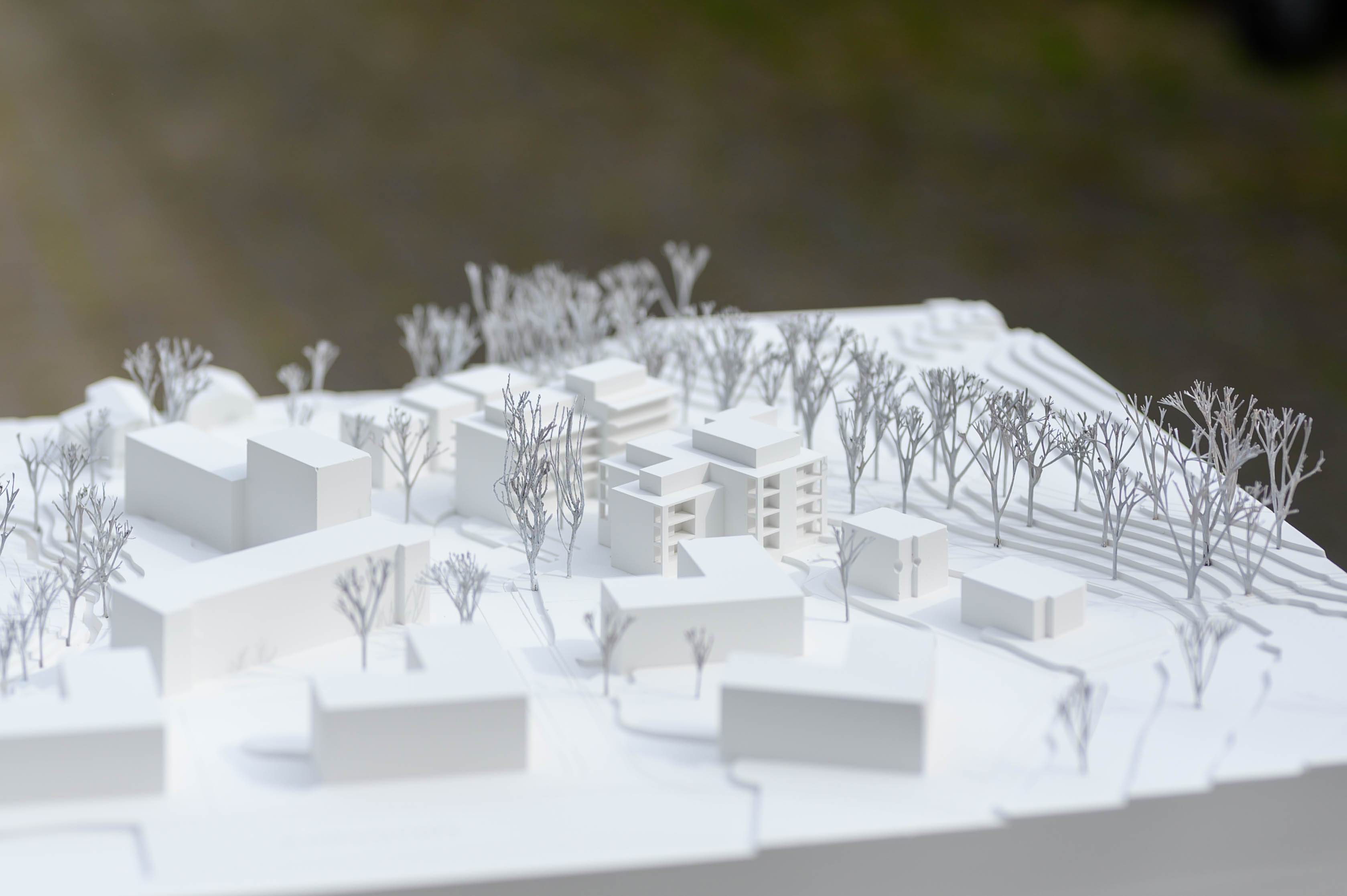


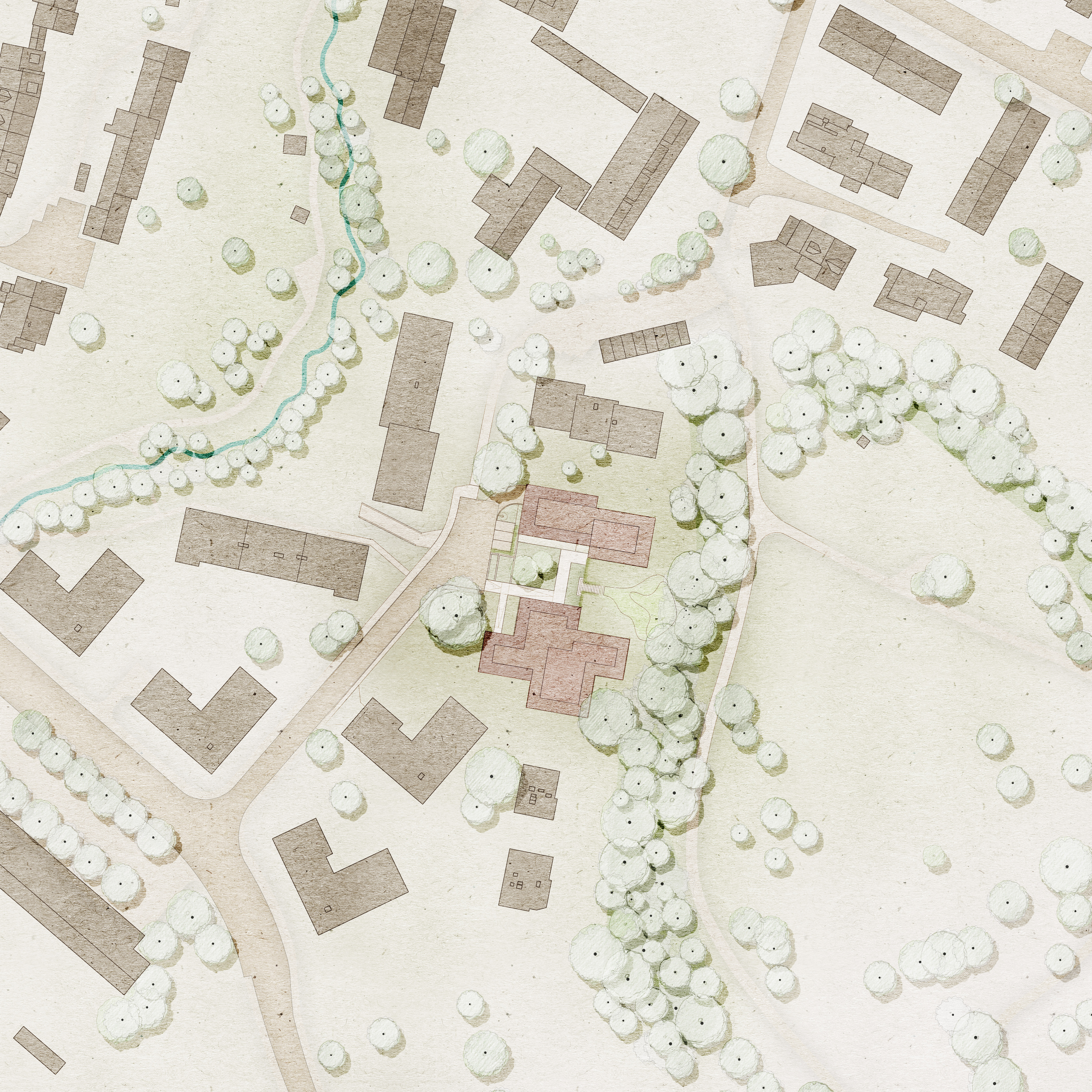

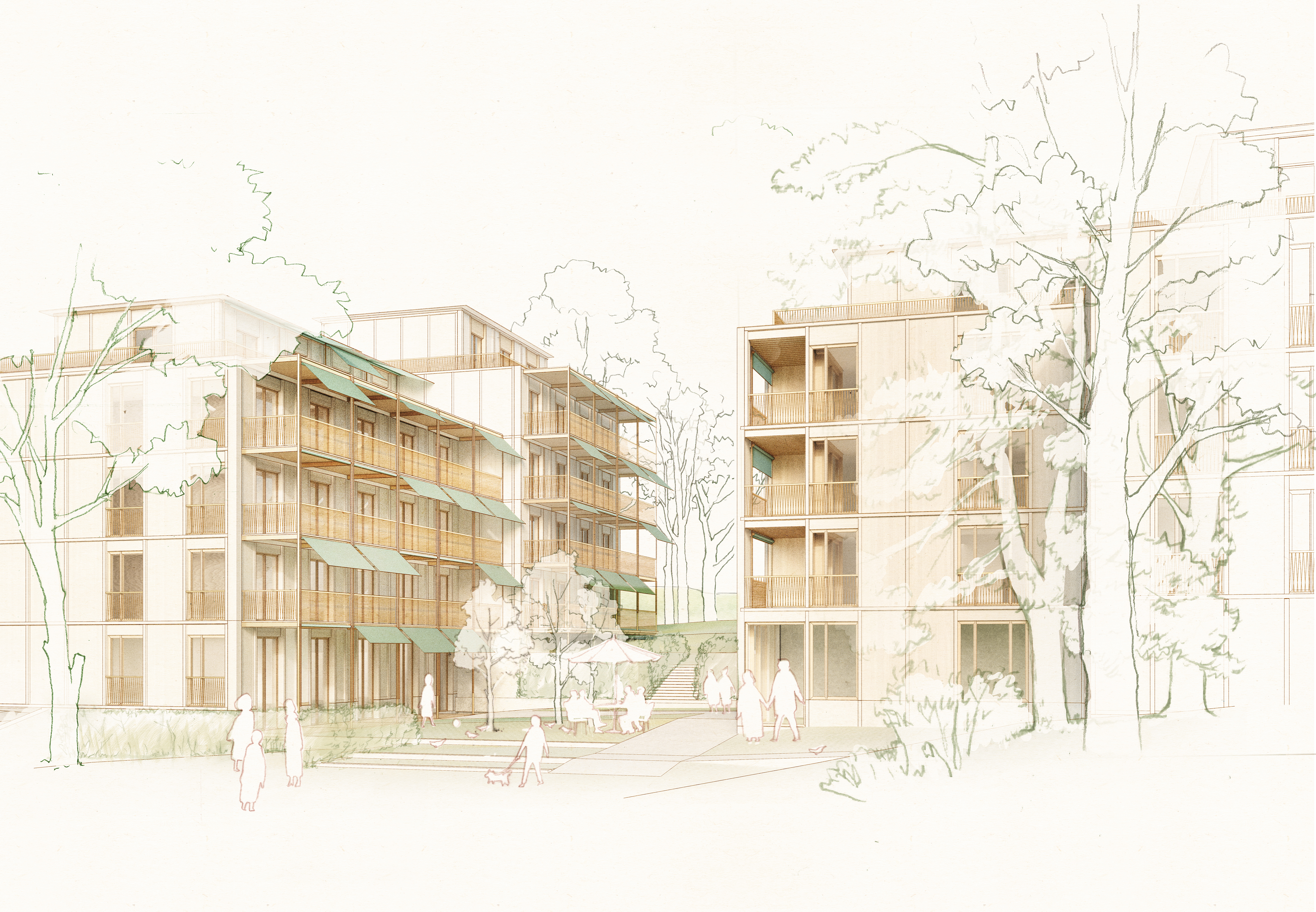

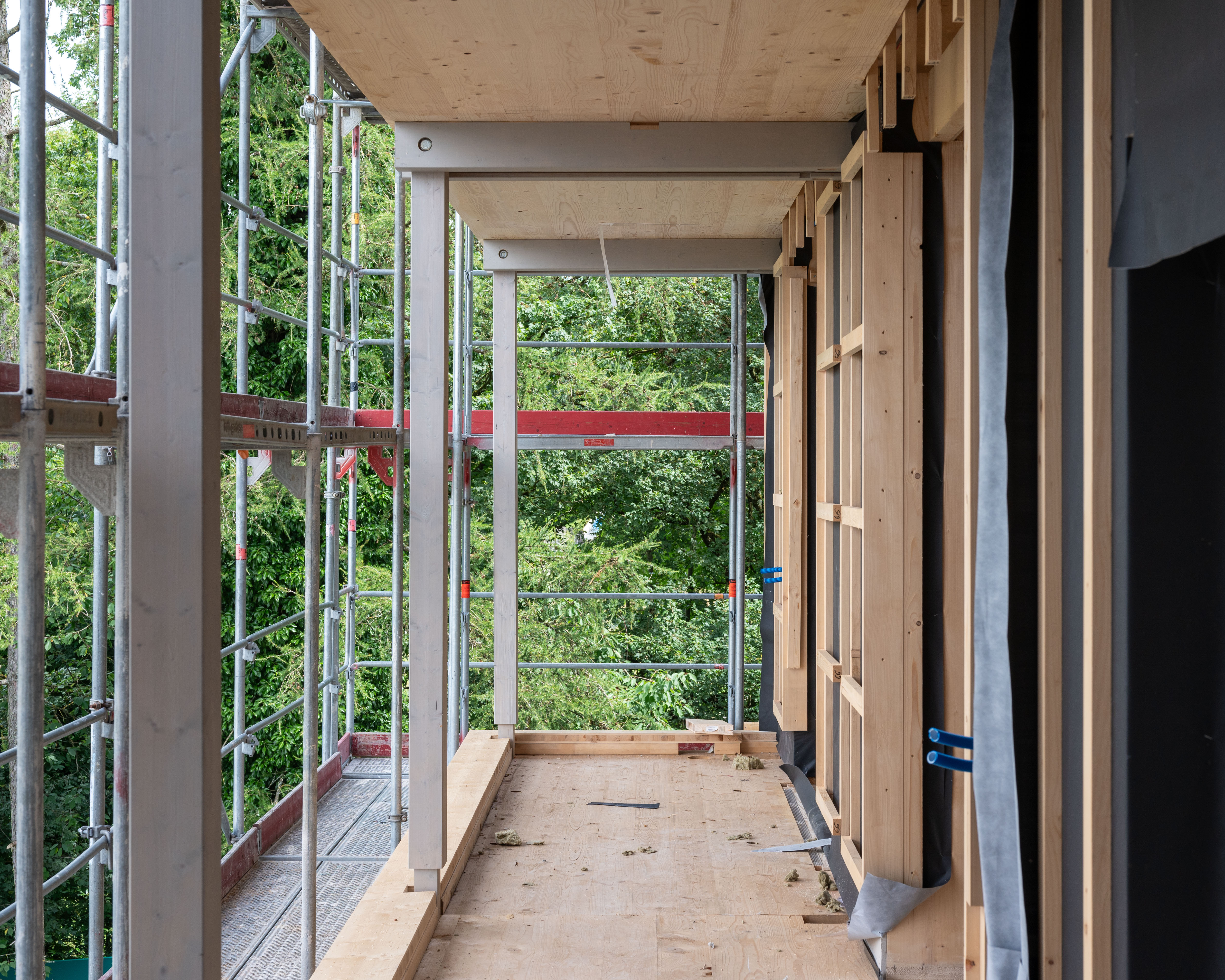

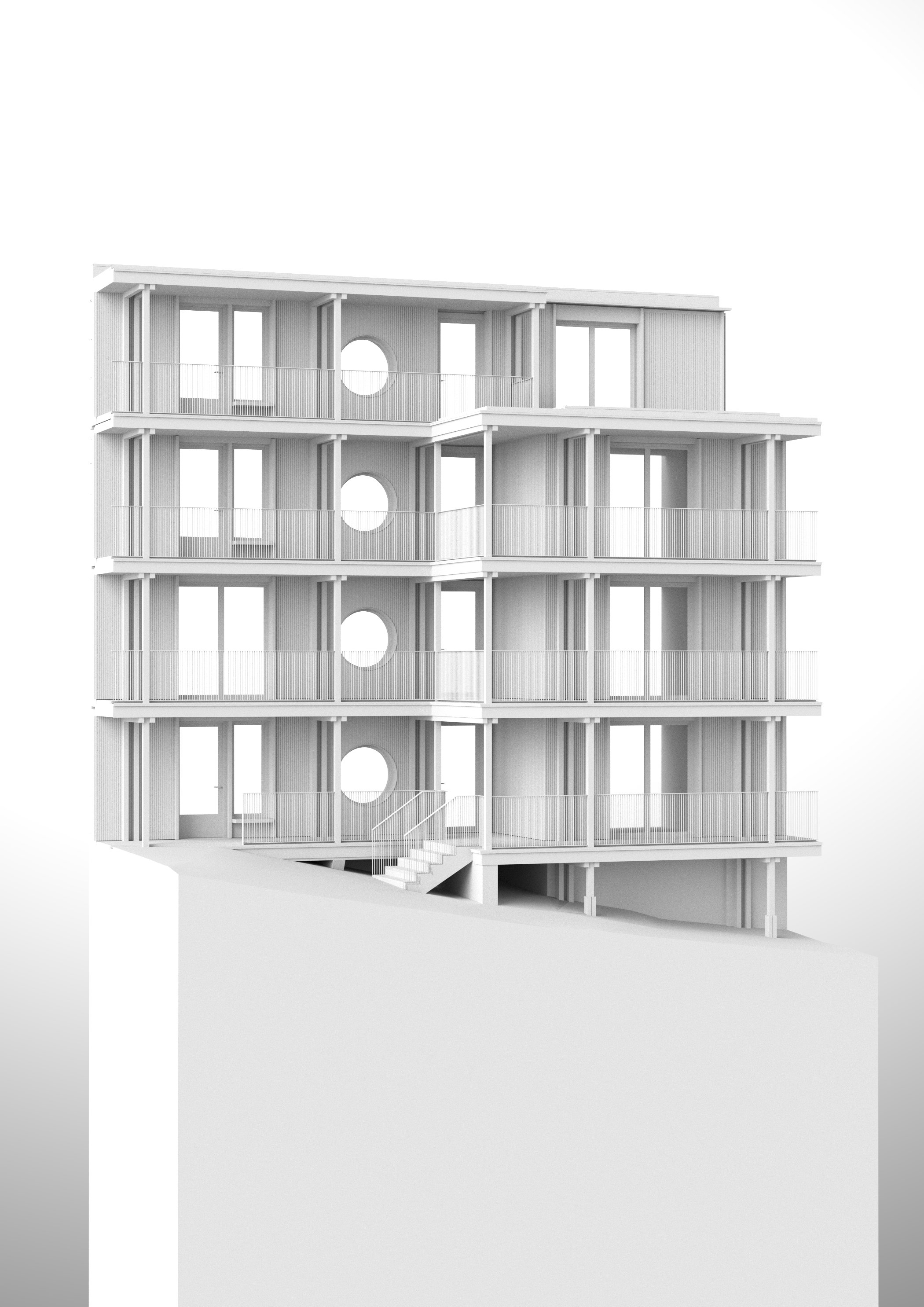
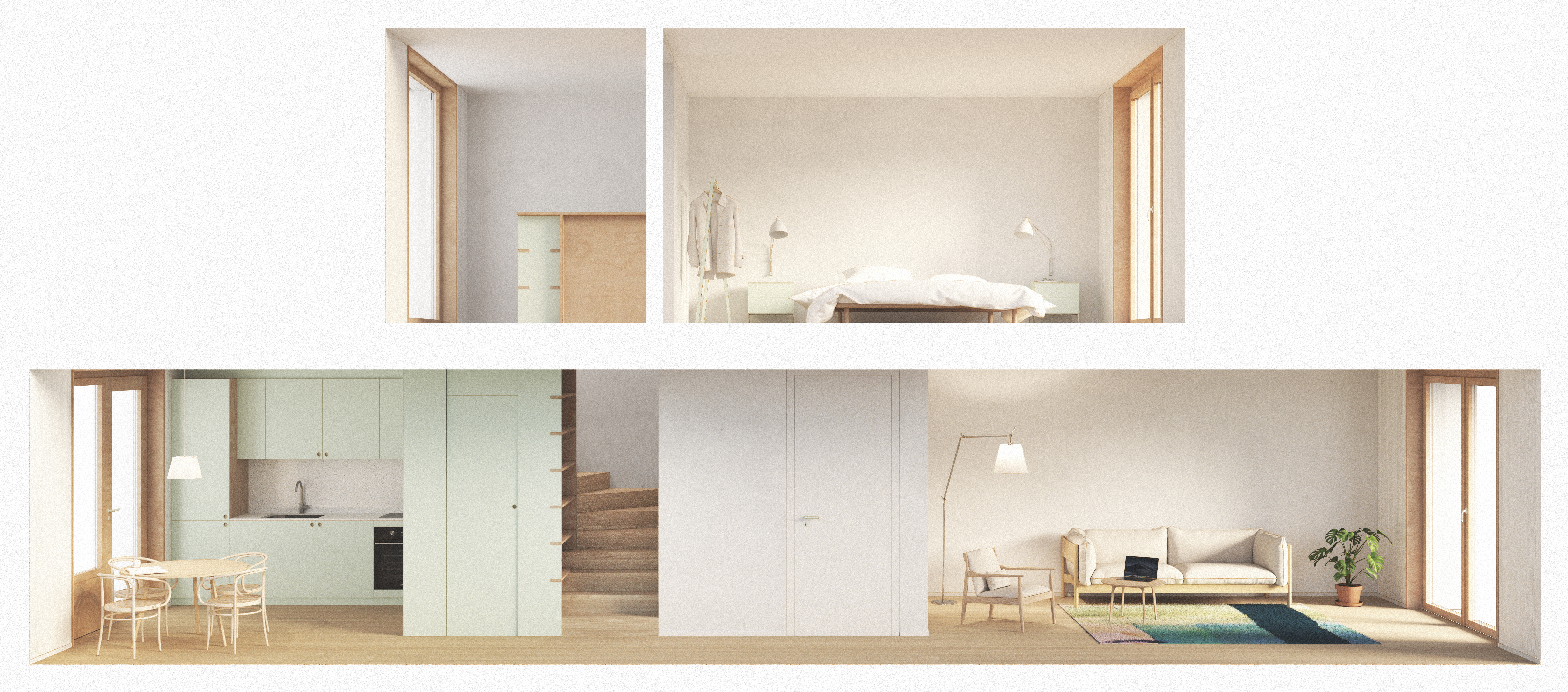

The Stettbacherrain neighborhood, on the northern side of the city of Zurich, is a residential development of very high urban and landscape quality, located between city and nature. The area was developed according to modernist ideals of green and light as basic human needs.
Without a sentimental attempt to replicate the existing buildings, we proposed two wooden volumes that retain the spatial and natural qualities of the preexistence. This strategy allows to preserve the visual references that are important for the tranquility and natural quality of the neighborhood, as well as the green passages and the fine-meshed network of nature between the buildings.
The two new buildings aim to keep and enhance the visual continuity between the street and the forest. The courtyard is meant to be a meeting point for the neighborhood, connecting the street to the vegetation in the east where the landscape will be kept as a natural, calm and protected space. A central theme in this project is the variation of housing typologies, which appeals to a wide range of residents with different needs and living concepts. In this sense, the spatial configurations of the two buildings are very different even though they are realized within a similar structural system.
Hochbergerstrasse 158, Basel
open competition, 2020 |
1st prize - completed in 2025



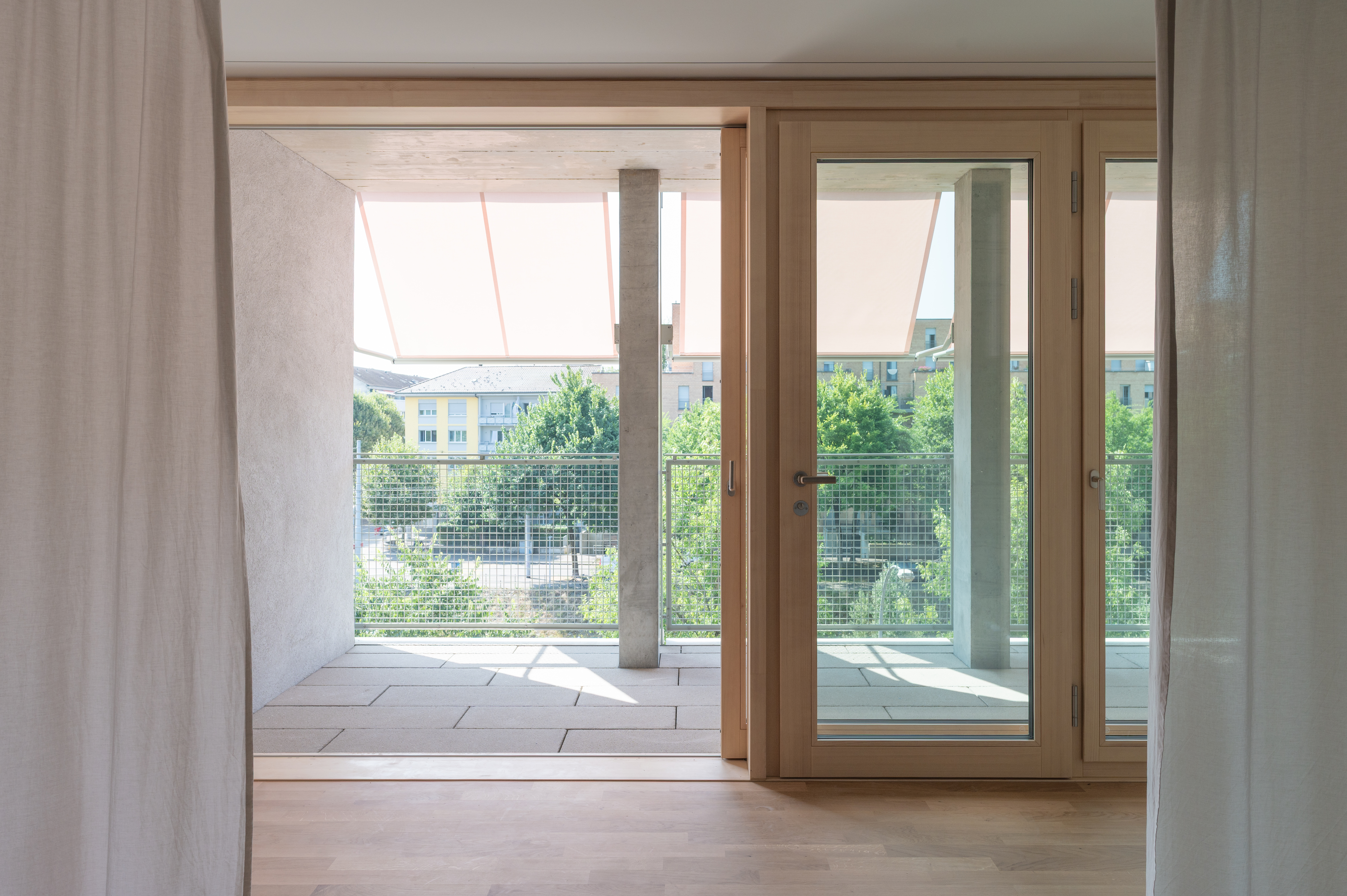






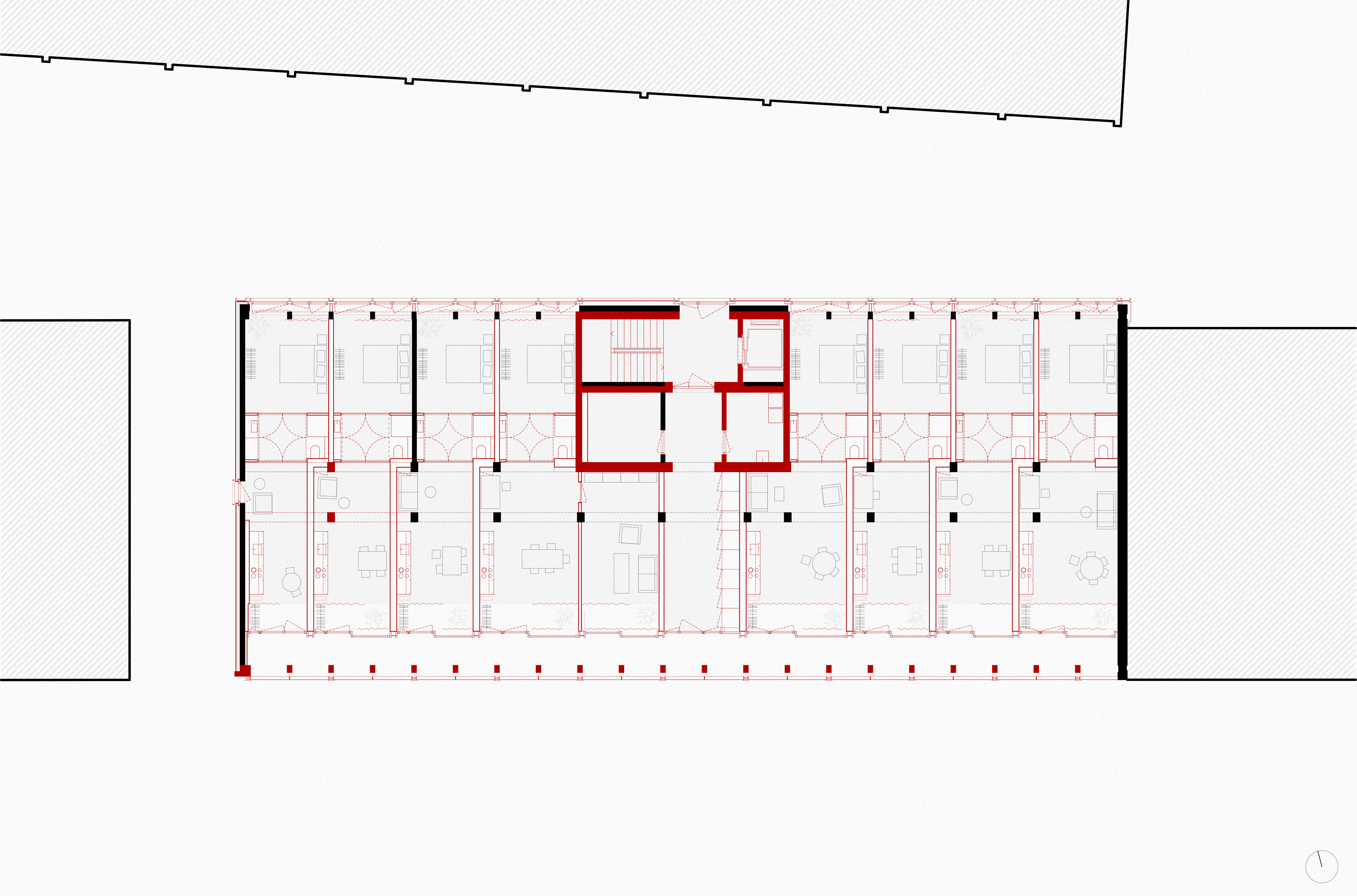
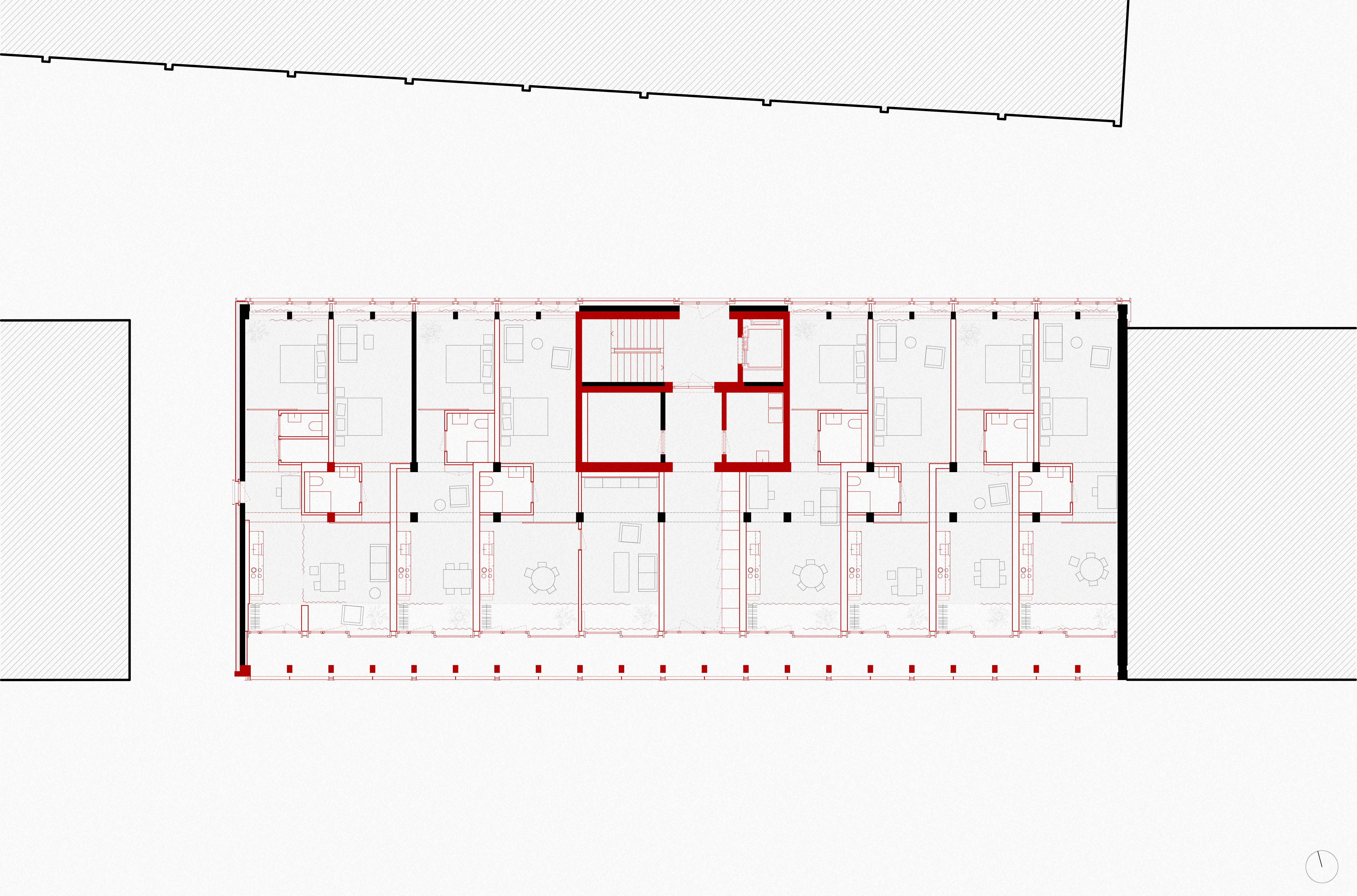



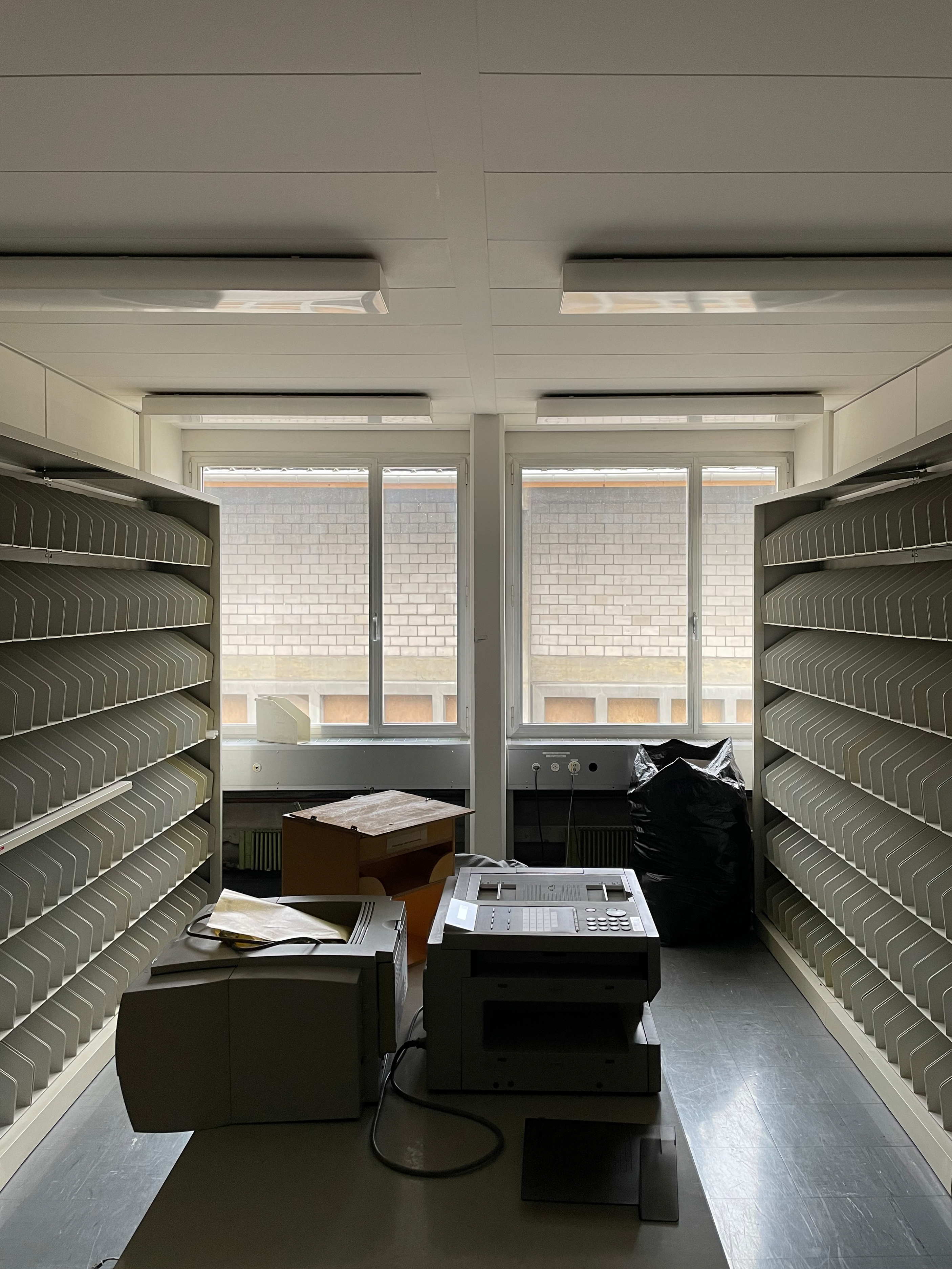



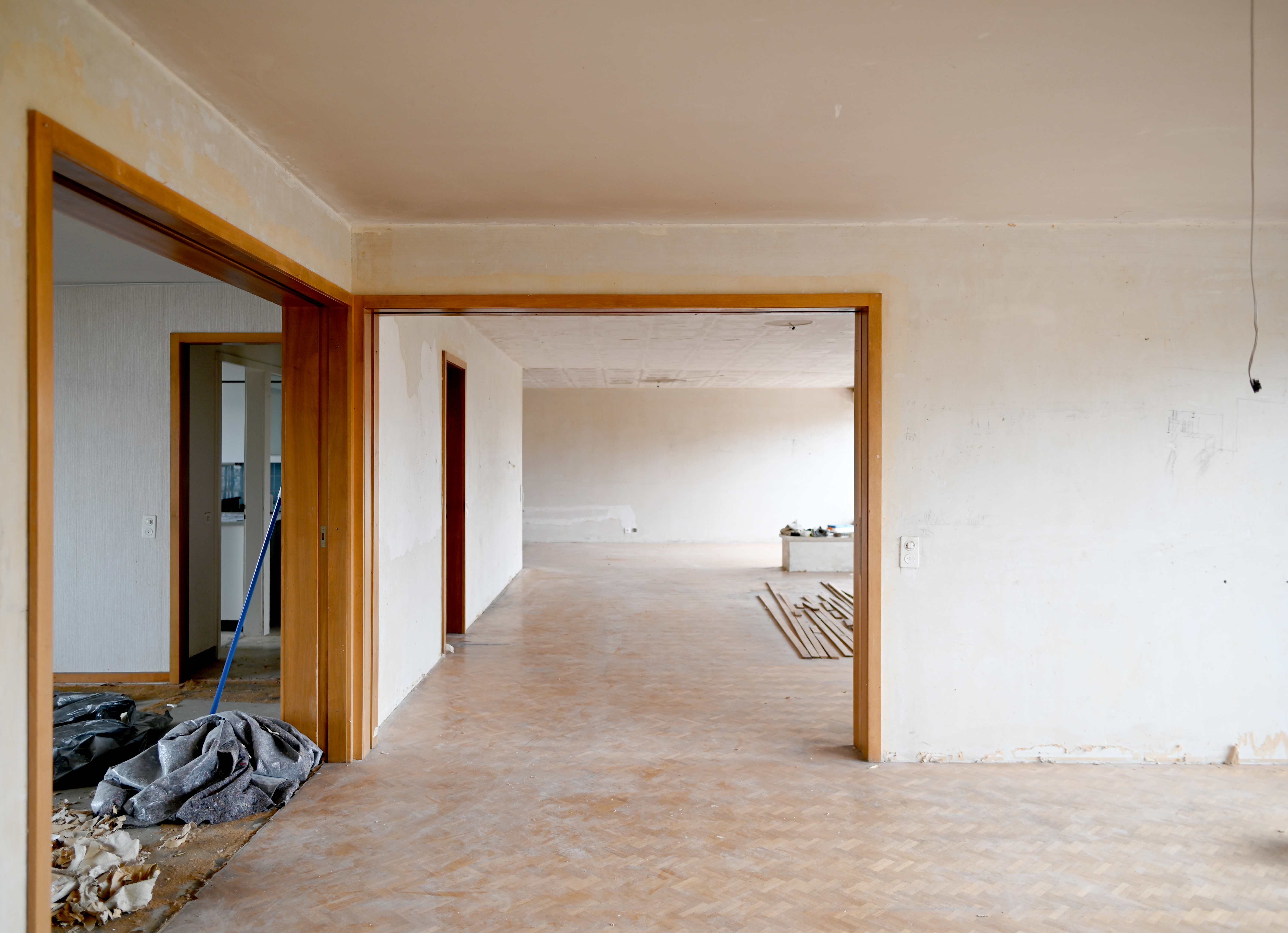

The former administrative
building of the Office for Environment and Energy (AUE)
in Kleinhüningen, built in 1965, is situated
in an area characterized by very different urban
structures. The heavy industry and the port facilities along the Rhine form a heterogeneous
composition of buildings
without significant design
features. Towards the Wiese, a rather standard residential area is located, providing mainly apartment buildings of
equal scale. On the north side, the old village of Kleinhüningen, with small historic houses
and fragments of picturesque streets, is brutally confined and cut off
from the activities of the port industry.
The building will be converted into dwellings for smaller households, communal spaces for residents and neighbours, as well as ateliers and coworking spaces. Its design is based on the idea of an arcade facing the street façade that connects all flats and creates a common space for interaction and spontaneous encounters. The layering of different boundaries creates a gradient of privacy, from the street and the arcade through the living rooms and kitchens to the bedrooms in the north, overlooking a quiet courtyard.
The existing concrete structure from the 1960s receives both a new interior and a new skin that represents the building's new function in the city. However, the two main facades to the south and to the north, are treated differently according to their function and context.
The south facade, facing the river Wiese and the street, is given a light steel structure that integrates the necessary elements such as sunshades and railings. Here, thanks to the arcade, the concrete support structure remains visible. The north facade will receive new windows and parapet cladding made of wood, creating a contrast to the rather rough industrial walls of the adjacent buildings, but at the same time recalling the atmosphere of the old village.
The building will be converted into dwellings for smaller households, communal spaces for residents and neighbours, as well as ateliers and coworking spaces. Its design is based on the idea of an arcade facing the street façade that connects all flats and creates a common space for interaction and spontaneous encounters. The layering of different boundaries creates a gradient of privacy, from the street and the arcade through the living rooms and kitchens to the bedrooms in the north, overlooking a quiet courtyard.
The existing concrete structure from the 1960s receives both a new interior and a new skin that represents the building's new function in the city. However, the two main facades to the south and to the north, are treated differently according to their function and context.
The south facade, facing the river Wiese and the street, is given a light steel structure that integrates the necessary elements such as sunshades and railings. Here, thanks to the arcade, the concrete support structure remains visible. The north facade will receive new windows and parapet cladding made of wood, creating a contrast to the rather rough industrial walls of the adjacent buildings, but at the same time recalling the atmosphere of the old village.
School, Kindergarten and Daycare centre, Glattfelden
open competition, 2022 |
1st prize - ongoing

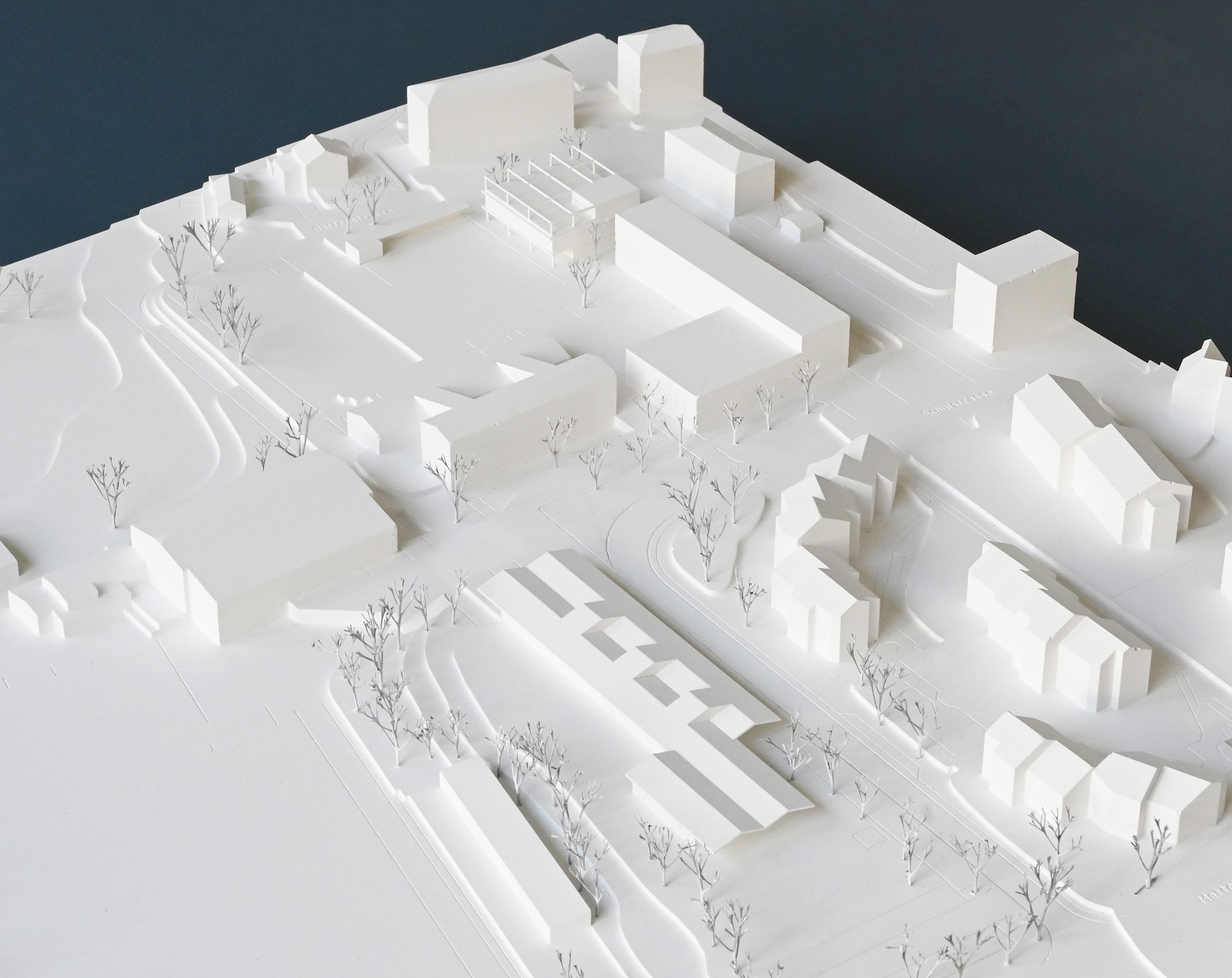
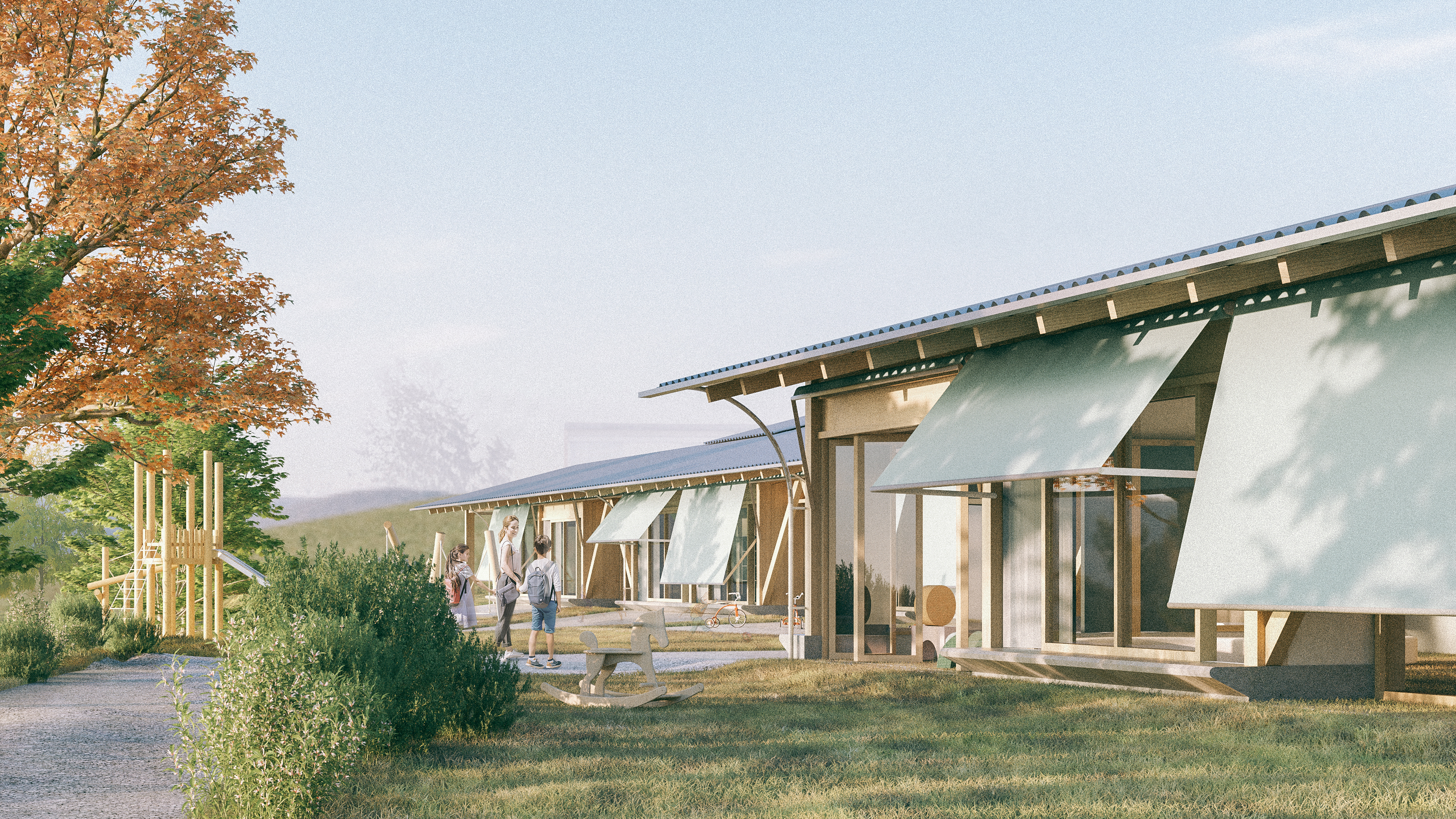

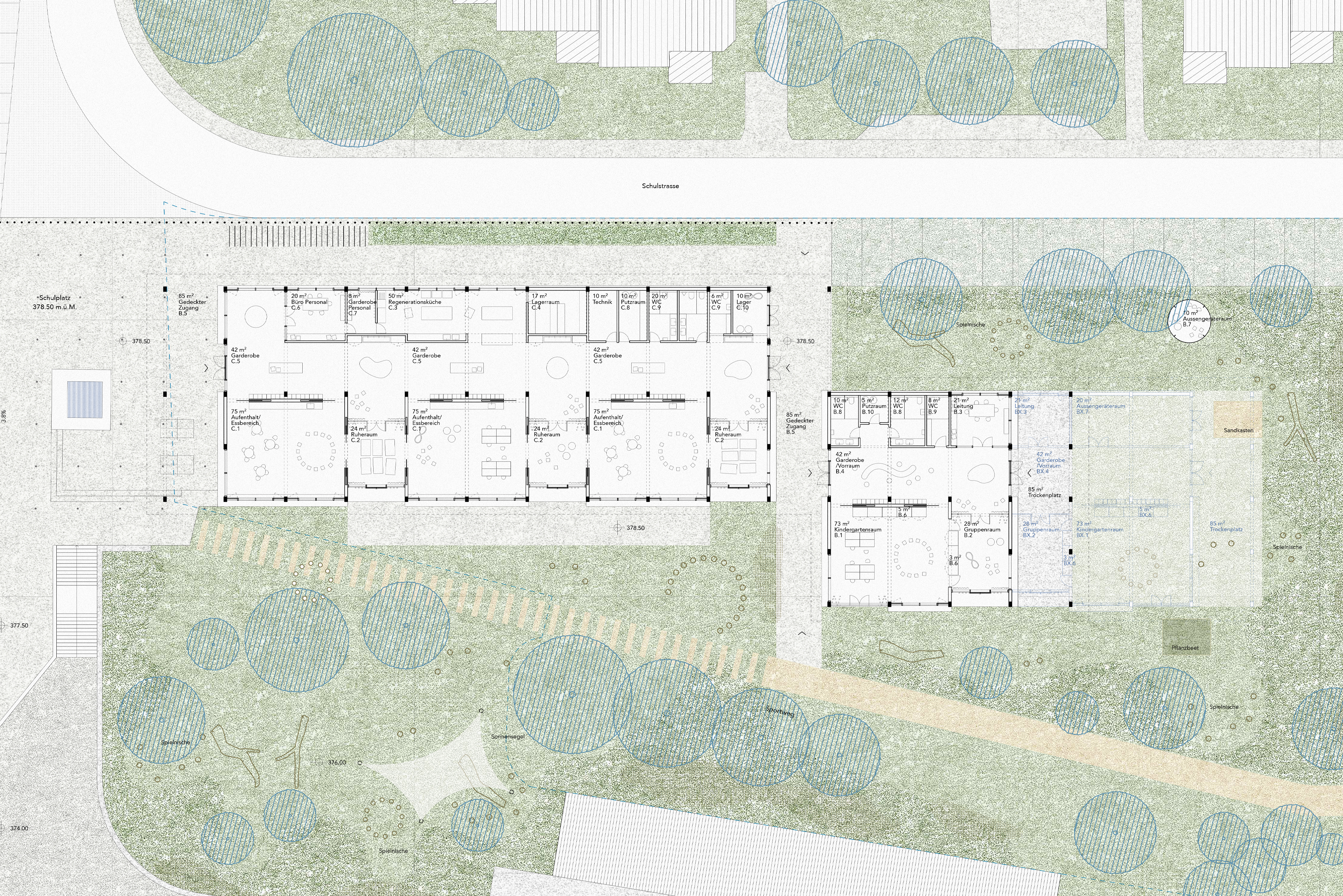

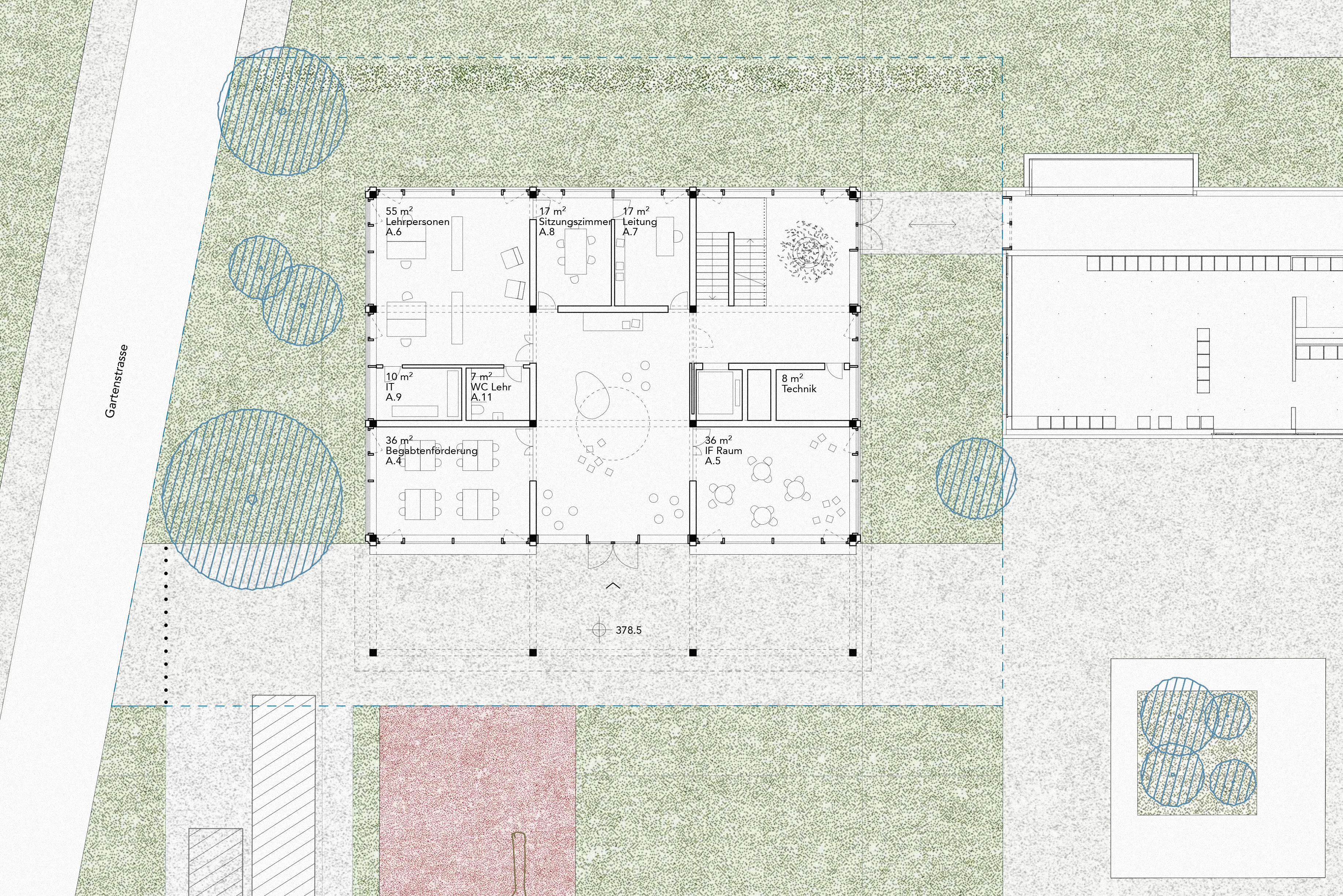
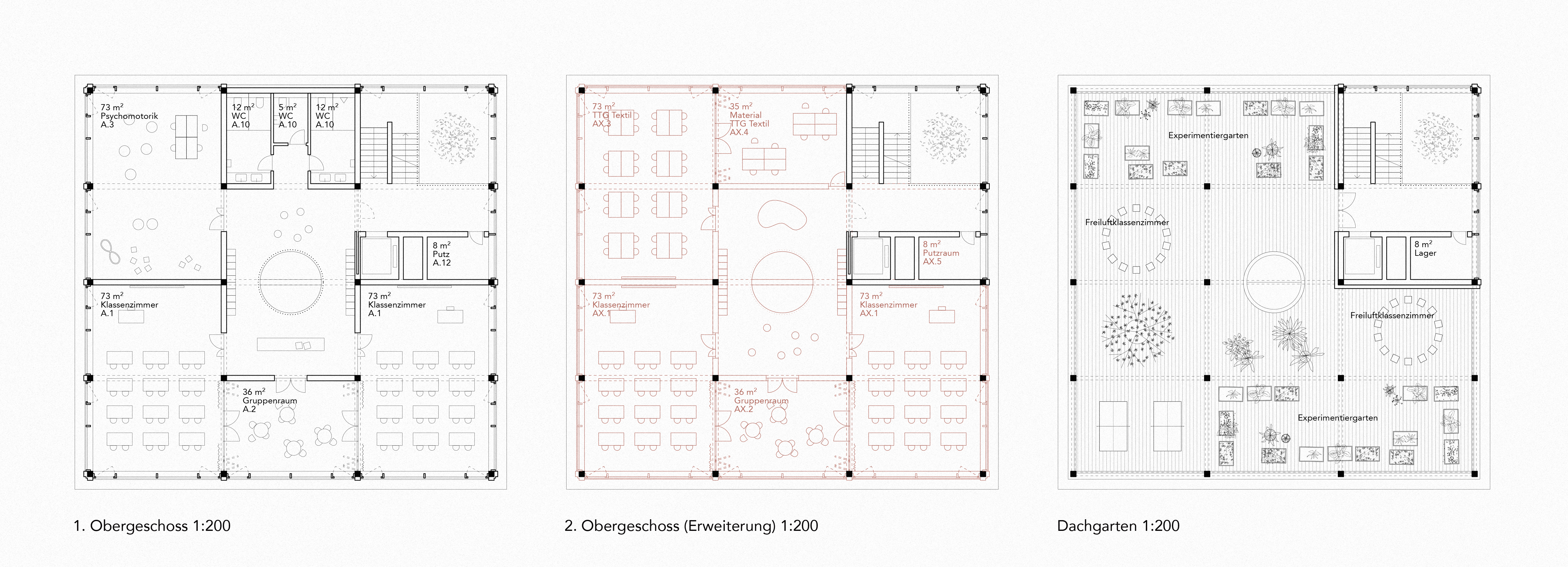

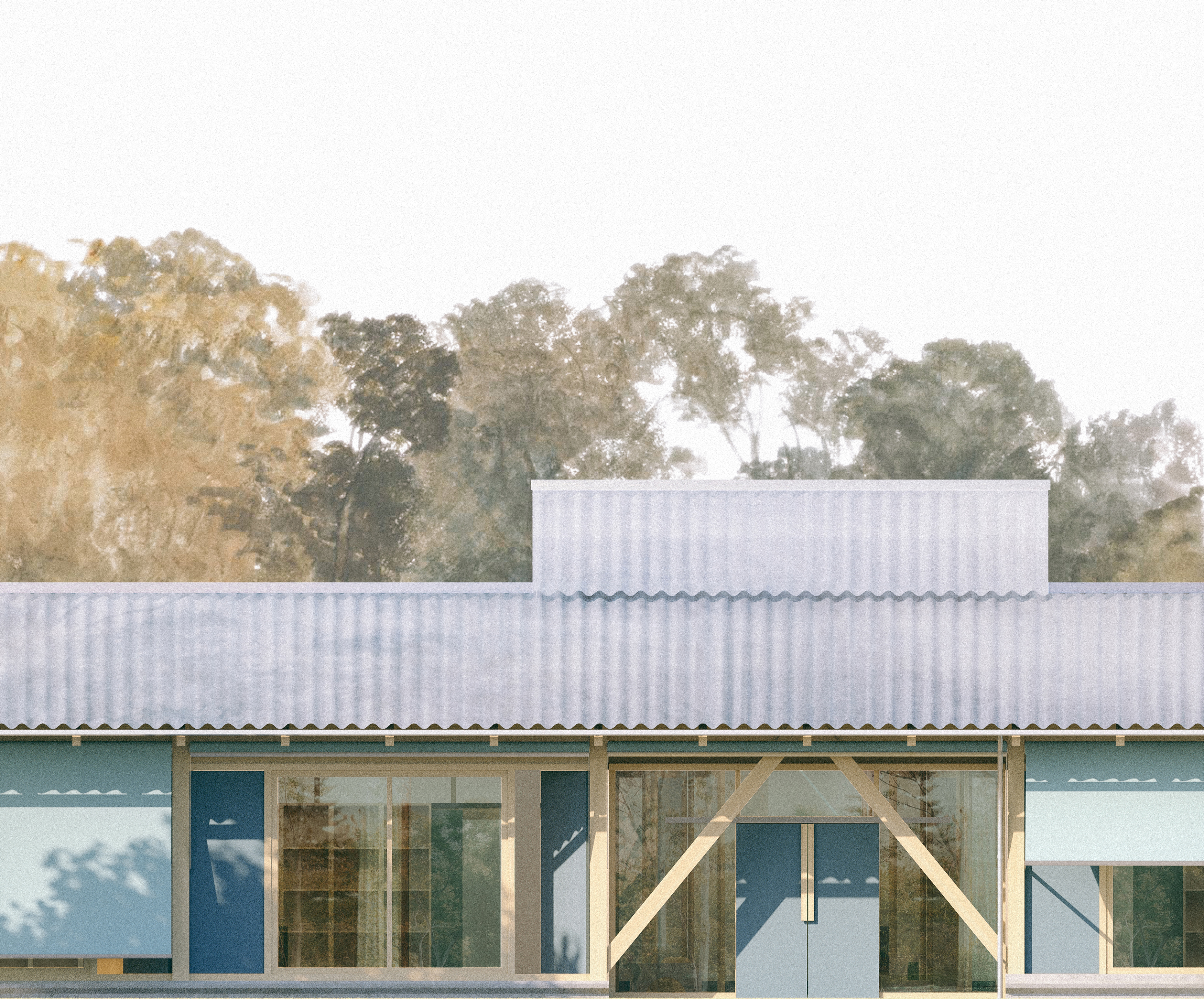
in collaboration with Kadid Studio
The project envisages two new wooden buildings that complement the architecturally diverse ensemble of the Eichhölzli school complex. With an urban-looking volume in two to three stories, the new elementary school encloses the existing schoolyard. An arcade forms the entrance area of the new school building and also functions as a roofed access to the school complex from the northeast.
To the southeast, the new daycare and the kindergarten complete the school ensemble with a more rural character. Here, two buildings are united under a common, elongated gable roof. With the adjacent new square, a complementary, yet central space is created as a connection to the existing school ensemble. A new path, protected from the street, will connect this square with the existing schoolyard.
Extension of a double Kindergarten, Riehen
selective competition, 2022
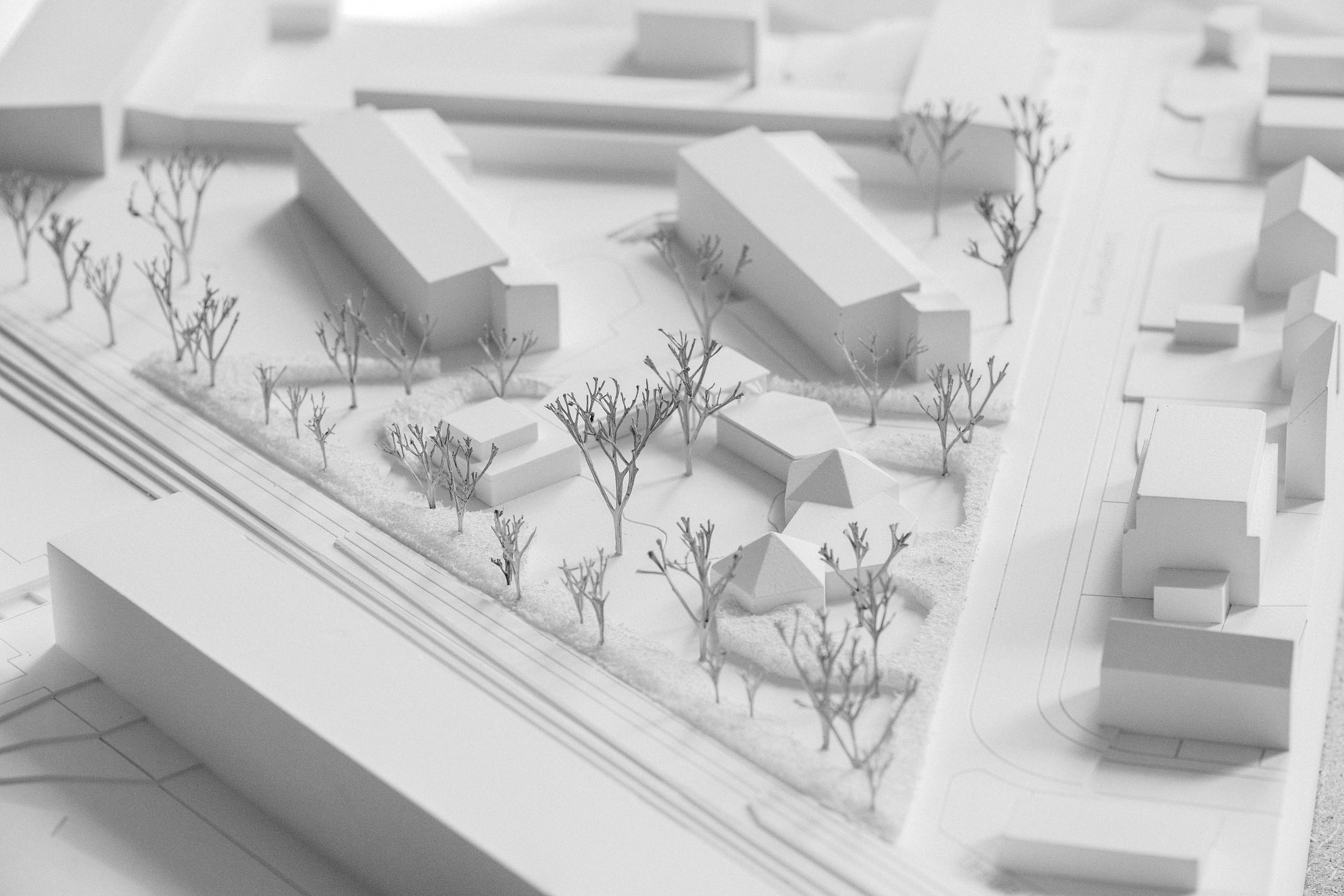
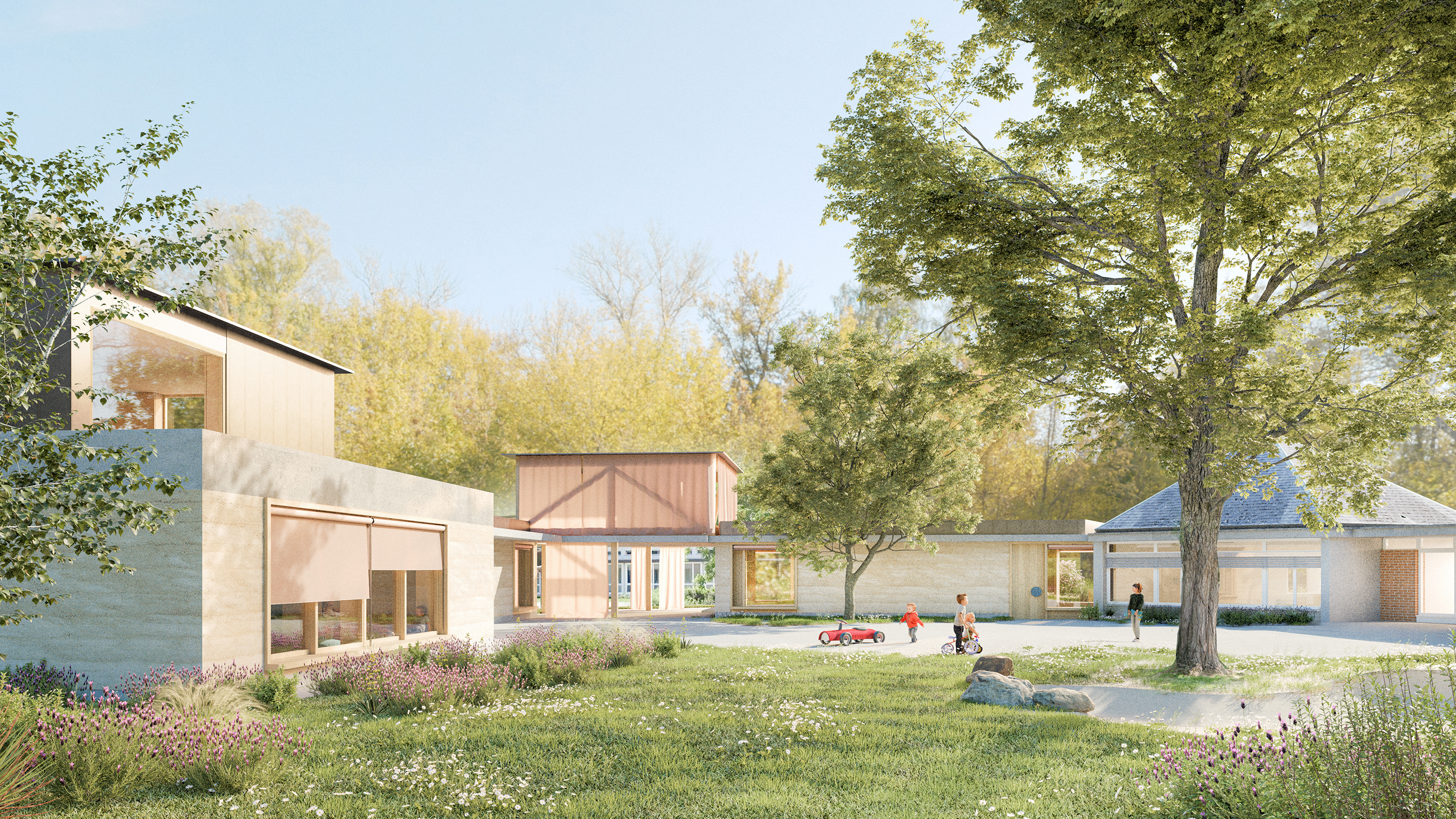

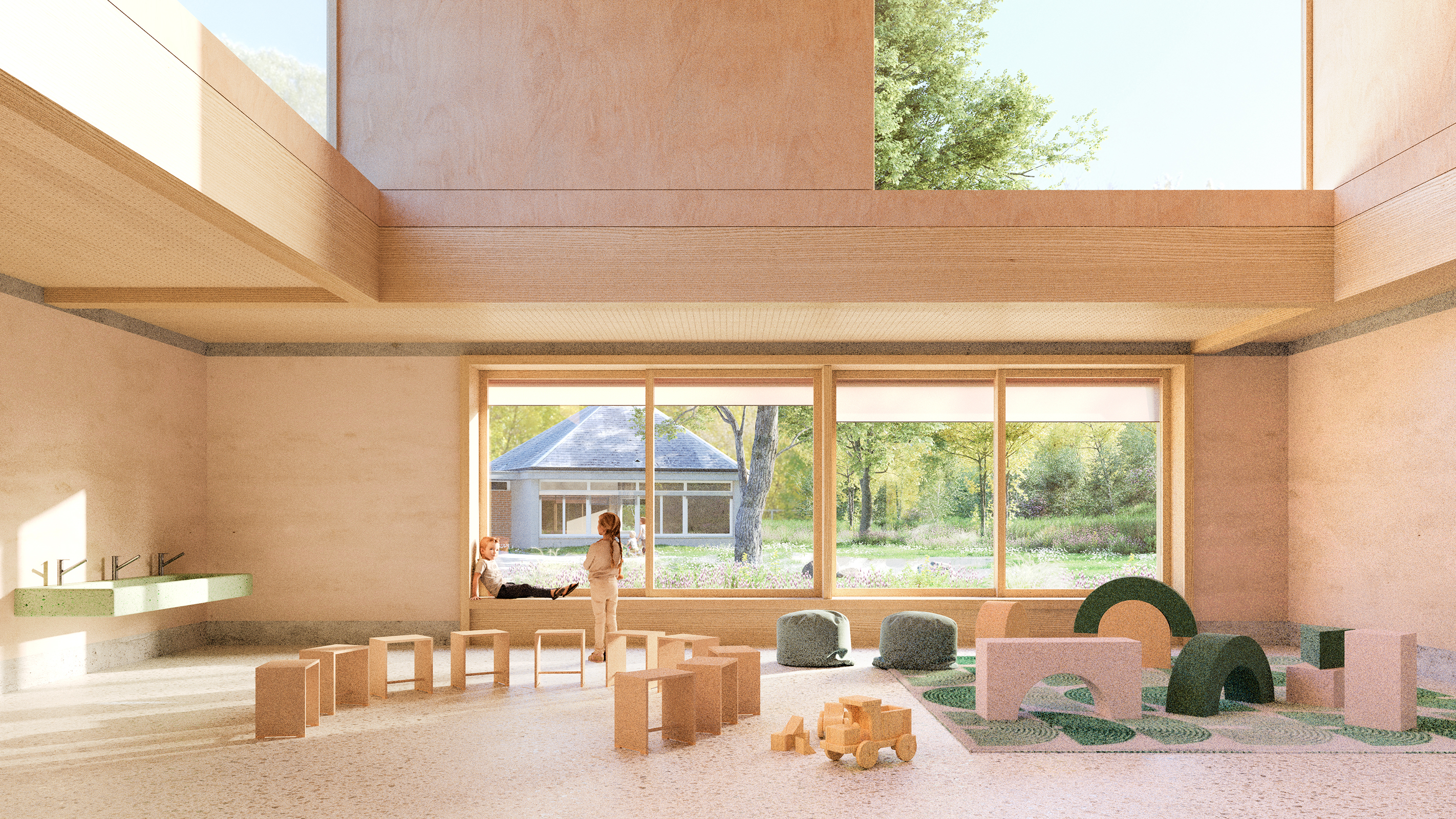
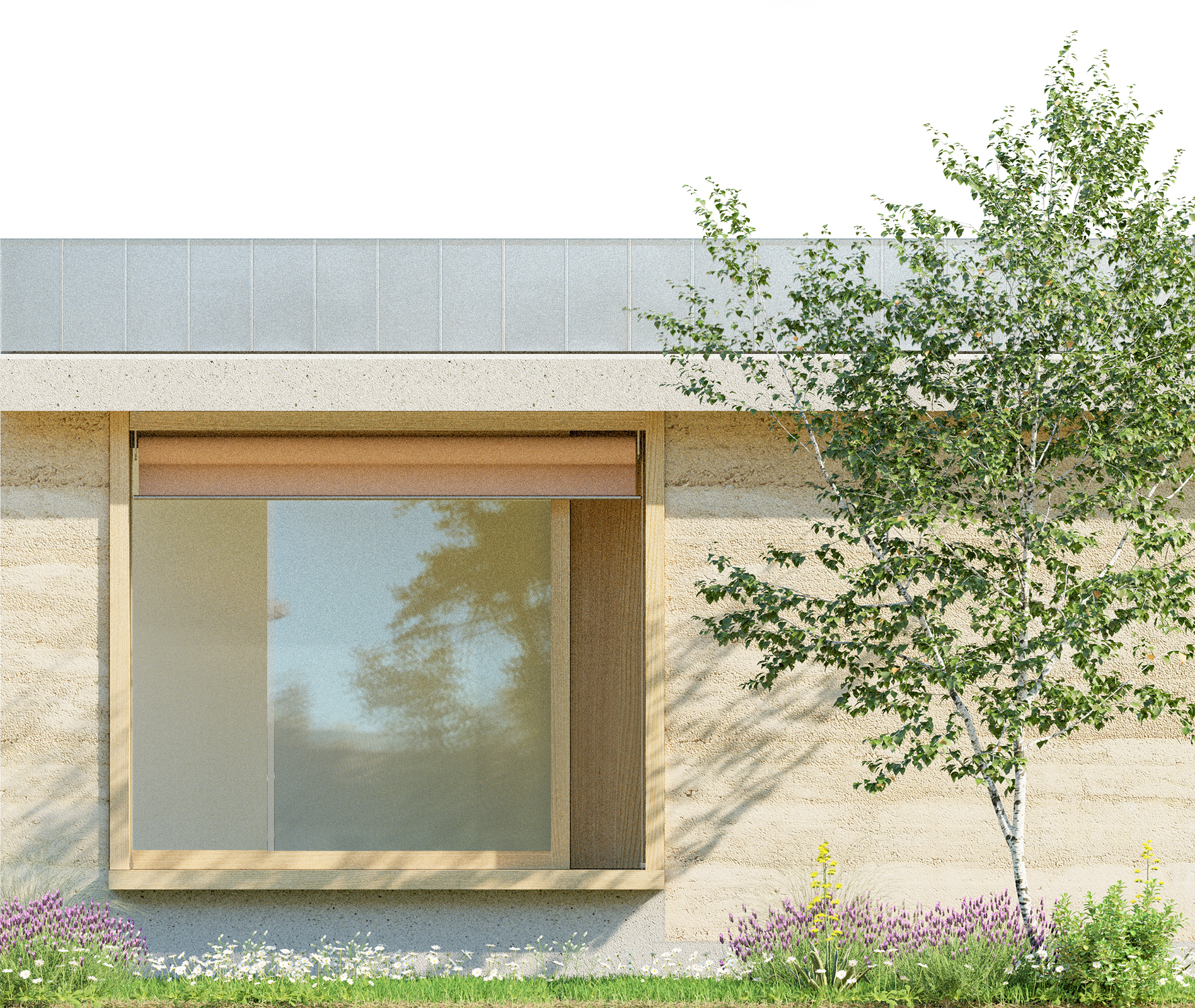

in collaboration with Kadid Studio
The double kindergarten in Langenlängeweg is located at the edge of the Niederholz school complex, immersed in a beautiful and “wild” park with luscious vegetation. The proximity of the german railway, running along the east side of the plot, can be barely felt.
Our strategy consisted in finding the elements that constitute the successful ensemble, built by Rasser & Vadi in 1953/54, and adding to it in a coherent way. The new volumes “proceed” from the existing and serve as a mean to enclose and define the outside space. They are carefully placed in the plot in order to create, for each Kindergarten, a smaller, cozier outside space that complements the main courtyard.